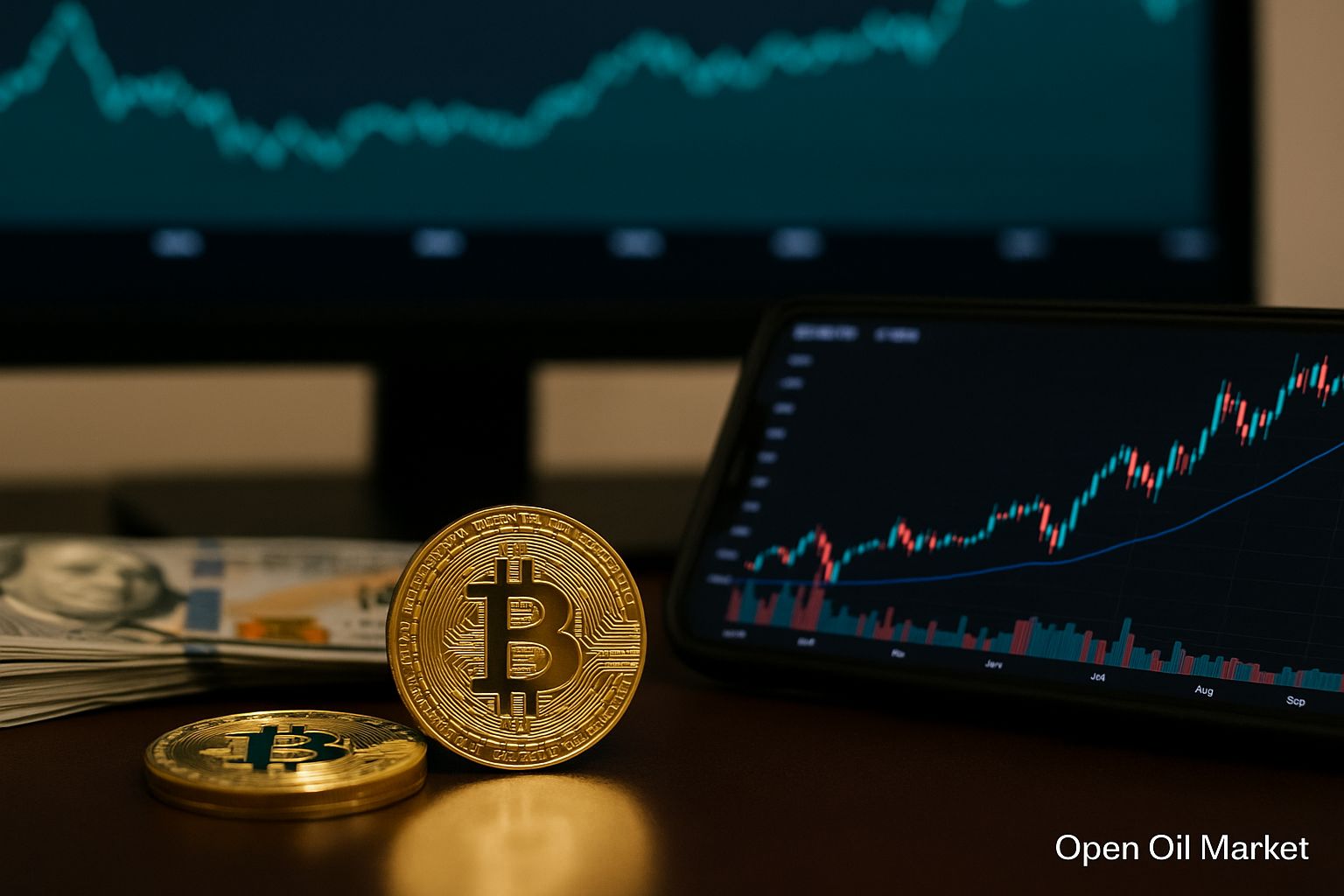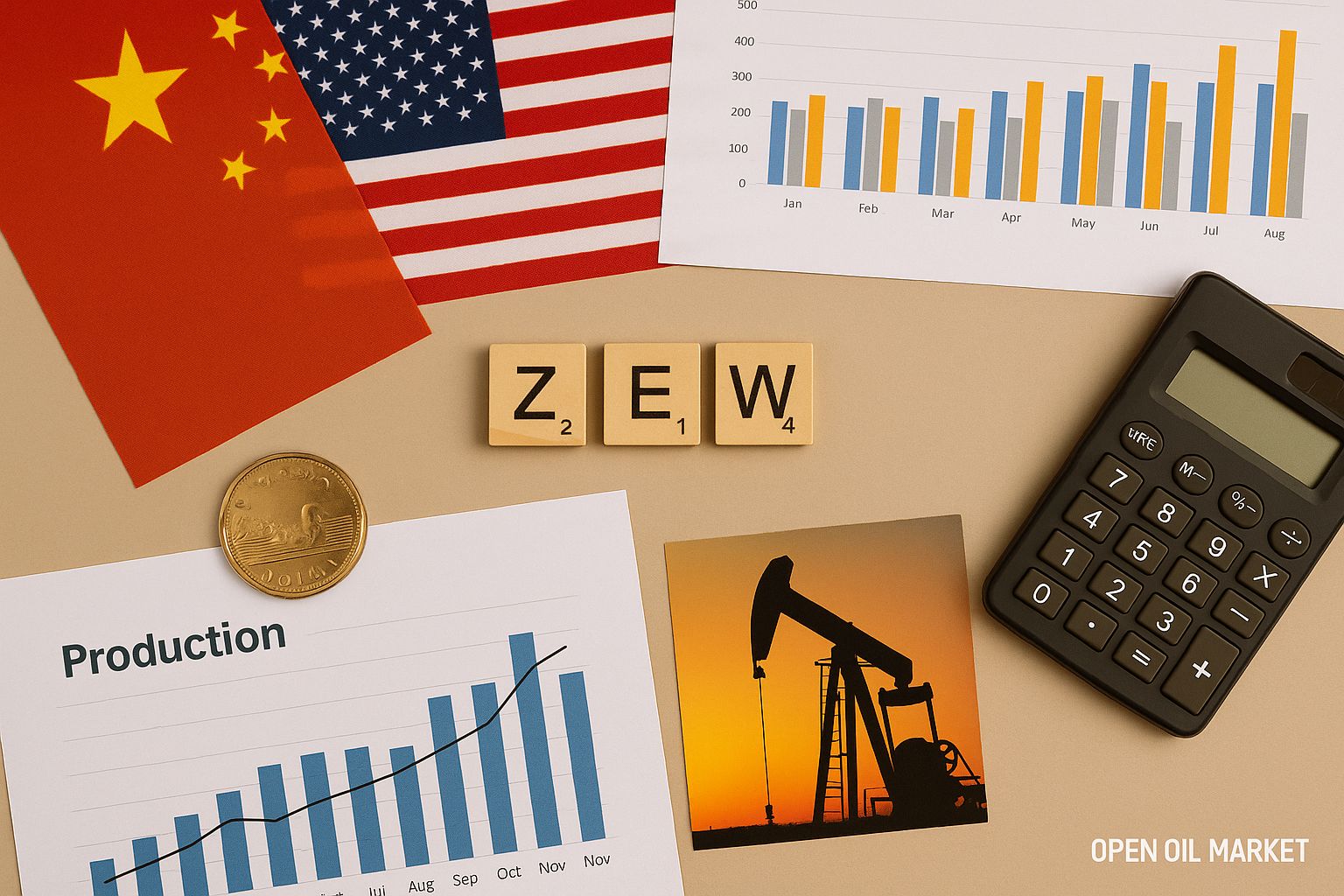The Cryptocurrency Market on 16th September 2025: Bitcoin Maintains Around $115,000, Ethereum Approaching All-Time Highs, Altcoins Setting New Records. Analysis of the Top 10 Cryptocurrencies and Regulatory Influence on the Market.
At the beginning of the week, the cryptocurrency market is demonstrating robust dynamics. Bitcoin is holding steady near its historical peak, while many altcoins are outpacing it in terms of growth. Such cryptocurrency news is attracting the attention of investors from the CIS and around the world, who are assessing the prospects of the digital assets market against the backdrop of impending regulatory decisions and macroeconomic changes.
Bitcoin Consolidates at Historical Highs
Bitcoin (BTC) has been trading around the $115,000 mark in recent days, having only slightly retreated from the record value recorded in August (approximately $124,000). Attempts to break through the $116,000 level faced profit-taking from several major long-term holders. According to blockchain data, some ‘old’ investors (so-called OGs) have transferred significant volumes of BTC to exchanges and partially realised profits after reaching six-figure price levels. Nevertheless, institutional interest in Bitcoin remains high: for instance, MicroStrategy increased its portfolio this week to 638,985 BTC, acquiring an additional 525 BTC at around $114,500 per coin. Thus, even at historical highs, Bitcoin continues to be viewed by major players as a long-term asset. The total growth of BTC since the beginning of the year exceeds 20%, and many analysts are anticipating a traditionally strong fourth quarter based on previous cryptocurrency growth cycles.
Ethereum Approaches All-Time Highs
Ethereum (ETH) is consolidating near historical values. The price of ETH reached approximately $4,500, which is less than 10% below the record peak (around $4,950, recorded at the end of August). After a recent correction, Ethereum has resumed its growth, with technical indicators (such as the Parabolic SAR) indicating an active upward trend. Major holders (‘whales’) continue to build positions in ETH, expecting outperformance of this asset relative to Bitcoin. Investor confidence in Ethereum is also bolstered by the development of its ecosystem—from network scaling to new DeFi and NFT applications. The proximity of ETH to its historical maximum is drawing heightened market attention, as a successful breakout above the psychologically important $5,000 mark could pave the way for new records.
Altcoin Rally Gathers Momentum
The market capitalisation of alternative cryptocurrencies (altcoins) is growing at an accelerated pace, indicating the start of another "alt season." Many large altcoins updated historical maxima or approached them in 2025, attracting significant capital inflows. Some of the growth leaders in recent weeks include:
- XRP (Ripple) – reached a new record of around $3, surpassing peaks from 2018, amidst positive news regarding legal disputes and growing interest in Ripple technology for international payments.
- BNB (Binance Coin) – climbed to ~$920, exceeding its previous maximum; the growth is attributed to active usage of Binance Smart Chain and the expansion of the Binance ecosystem.
- Solana (SOL) – rose to ~$230, returning to levels seen at the end of 2021. Investors have renewed faith in the project after improvements in network stability and significant investments in the Solana ecosystem.
- TRON (TRX) – increased to ~$0.34, setting a new historical maximum. This was aided by high demand for stablecoins on the Tron blockchain and widespread adoption of the network in the Asian region.
- Cardano (ADA) – surpassed the $0.85 mark, reflecting a resurgence of interest in the Cardano smart contract platform after protracted consolidation. Gradual technical upgrades are strengthening the community's trust in ADA's long-term prospects.
The rapid growth of altcoins has reduced Bitcoin's share of total crypto market capitalisation to approximately 57% (down from around 65% mid-year). The overall market capitalisation of digital currencies is closely approaching $4 trillion, reflecting an increasing appetite among investors for risk assets in the cryptocurrency market.
Meme Cryptocurrencies: Volatility and New Products
High-risk "meme" cryptocurrencies, such as Dogecoin (DOGE) and Shiba Inu (SHIB), are displaying heightened volatility in mid-September. Following recent increases, DOGE has pulled back approximately 10% over a day, while SHIB has dropped 6%. This is attributed to profit-taking and fund redistribution among investors toward larger altcoins. However, even amidst this correction, the penetration of meme tokens into traditional finance continues. Notably, the first exchange-traded fund (ETF) targeting a basket of meme cryptocurrencies has emerged in the market, bringing Dogecoin and similar assets closer to Wall Street. The launch of such an ETF indicates demand for new ways to invest in this segment, although the volatility of such assets remains extraordinarily high.
Institutional Interest and Crypto Firms Going Public
Interest from large investors in cryptocurrencies continues to grow. In addition to direct investments in Bitcoin by companies (the aforementioned MicroStrategy is not the only example), traditional financial players are keen to offer crypto products to their clients. Several crypto firms have announced plans to go public: for example, the Gemini exchange and blockchain fintech Figure Technologies are preparing for IPOs this autumn, while a number of companies (Circle, Bullish, etc.) have successfully raised capital through public offerings in 2025. Institutional involvement is also manifesting through the launch of new crypto funds and exchange-traded products focused on digital assets. The influx of capital from professional investors enhances market liquidity and contributes to its gradual maturation.
Macroeconomics and Regulation
Several external factors are influencing market sentiment:
- US Federal Reserve Policy: The US central bank may lower the base rate as early as September, which will create more favourable conditions for risk assets. Expectations of a monetary policy easing are reflected in the market: lower bond yields make investments in Bitcoin and other crypto assets more attractive for investors.
- Launch of Crypto ETFs: The US Securities and Exchange Commission (SEC) is considering applications for a multitude of crypto ETFs, including funds based on Bitcoin, Ethereum, and specific altcoins (Solana, XRP, Dogecoin, etc.). Approval of such products could attract new institutional capital and expand investment possibilities in cryptocurrencies through traditional exchange instruments.
- European Regulation: A unified set of rules for the industry (MiCA regulation) is coming into force in the European Union. Regulators in several EU countries are already calling for increased oversight of the industry under the new norms. Enhanced scrutiny by authorities towards the crypto market aims to improve transparency and protect investors, which could strengthen confidence in digital assets in the long term.
- Bitcoin Halving Cycle: Following the scheduled reduction of mining rewards in spring 2024 (halving), Bitcoin has historically reached new price peaks 12-18 months later. 2025 falls into this post-halving period, and many expect that a decrease in BTC supply amidst steady demand will drive market growth in this cycle.
Collectively, these factors are shaping the macroeconomic and regulatory backdrop against which investors are assessing the prospects for cryptocurrencies in the second half of 2025.
Top 10 Most Popular Cryptocurrencies
- Bitcoin (BTC) – the first and largest cryptocurrency (approximately $115,000 per BTC). Bitcoin serves as "digital gold" with a market capitalisation of around $2.3 trillion, having updated its historical maximum in 2025, solidifying its role as a barometer for the entire crypto market.
- Ethereum (ETH) – the second-largest digital asset by capitalisation (approximately $4,500, with a capitalisation around $550 billion). The smart contract platform underpinning DeFi and NFT ecosystems; ETH is very close to its record price level, reflecting high demand for the Ethereum network.
- Tether (USDT) – the largest stablecoin pegged to the US dollar (1 USDT = $1). Issued by Tether and supported by reserves of fiat currency; capitalisation ~ $80 billion. USDT provides high liquidity in the market and serves as the primary means of settlement between cryptocurrencies.
- Binance Coin (BNB) – the proprietary token of the largest cryptocurrency exchange Binance and its blockchain platform BNB Chain (approximately $917 per coin). BNB is used to pay fees and in smart contracts within the Binance ecosystem; its capitalisation (~$145 billion) positions the coin among market leaders, with its price in 2025 having set a new record amidst the platform’s growth.
- XRP (Ripple) – the token of the Ripple payment network for bank transfers (approximately $3.0). XRP achieved a historical maximum in 2025 on the wave of favourable legal outcomes and the expanding application of Ripple technology among banks; the market value of the token exceeded $170 billion.
- USD Coin (USDC) – the second most significant stablecoin, issued by the Centre consortium (involving Circle and Coinbase). USDC is backed by dollar reserves (1 USDC = $1) and has a capitalisation of around $50 billion. Widely used in trading and DeFi, distinguished by transparency and regulatory compliance.
- Solana (SOL) – a high-speed blockchain platform (L1) for smart contracts and applications (approximately $233). SOL attracts DeFi and NFT projects due to low fees and scalability; in 2025, SOL’s price significantly rose (capitalisation > $100 billion), recovering after the downturn in 2022.
- Dogecoin (DOGE) – the most well-known "meme" cryptocurrency created for fun (approximately $0.26). Despite its ironic origins, DOGE ranks in the top 10 with a capitalisation of around $40 billion and is popular among retail investors. In 2025, ETF products targeting Dogecoin emerged, reflecting interest in this asset in traditional markets.
- TRON (TRX) – a platform for decentralised applications and content (approximately $0.34). The TRON network is widely used for issuing stablecoins (including USDT) and cross-border payments; in 2025, TRX set a new historical maximum, with the project's capitalisation reaching ~$30 billion. TRON is popular in the Asian region and continues expanding its ecosystem.
- Cardano (ADA) – a third-generation blockchain platform with a research-based approach to development (approximately $0.86). The Cardano project implements incremental technological upgrades; ADA retains its position among the top ten largest cryptocurrencies (capitalisation around $30 billion) and is gradually recovering ground as the smart contract ecosystem grows.
Market Outlook
Overall, sentiment in the cryptocurrency market in the second half of September remains cautiously optimistic. The "fear and greed" index for cryptocurrencies is fluctuating in neutral territory, indicating a lack of overinflated expectations. Many participants hope for a continuation of the rally in the fourth quarter—historically the strongest for Bitcoin and altcoins—especially if favourable scenarios unfold (easing of Fed policy, launch of ETFs, etc.). At the same time, some analysts urge caution: the market may have already priced in positive expectations, making a new wave of growth uncertain. The principle of "buy the rumour, sell the news" serves as a reminder that after the long-awaited positive news breaks, profit-taking and correction might ensue.
Nevertheless, compared to previous cycles, the cryptocurrency industry has become more mature. The presence of institutional players is rising, the regulatory environment is becoming clearer, and infrastructure is improving (ETFs, banks, custodial services). All this enhances trust in digital assets. Despite the sustained high volatility, the cryptocurrency market will continue to attract investors, offering new opportunities for capital growth in a changing economic landscape.




